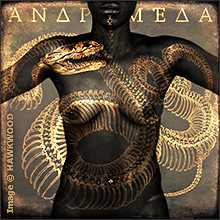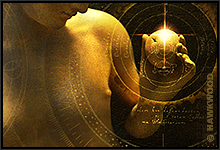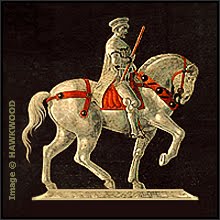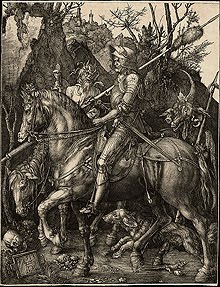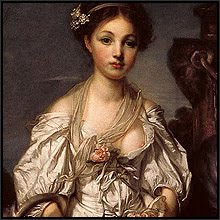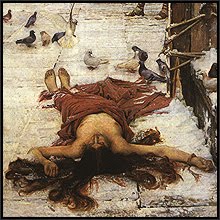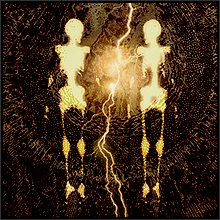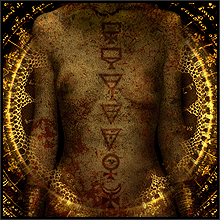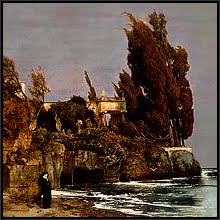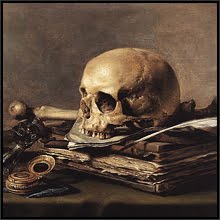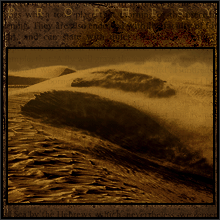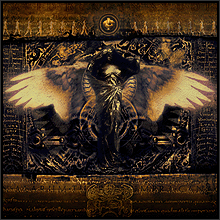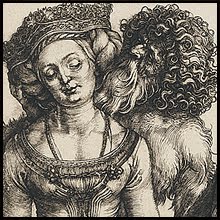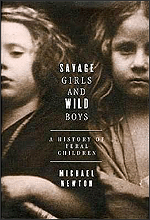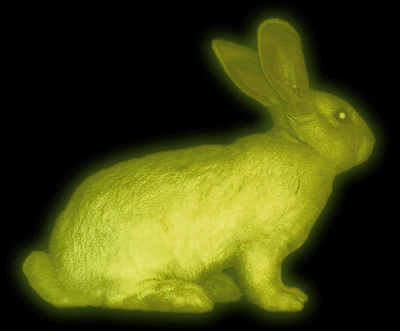
Perhaps the most easily recognised symbol which defines that difference is the familiar pentagram. When the apex of the pentagram points upwards (above, left) we consider it to be 'good', and when it is inverted (above, right) it is considered 'evil'. But all ideas come from somewhere, so where did these particular ideas come from? Historically, the pentagram is ancient, stretching back to Babylon, and beyond even that to Sumer, which at its most ancient is divided from our own time by some six millennia. Those things which we now think of as being the cornerstones of our civilisation seem to have begun in far-off Sumer, from the art of writing, formal education and social laws, to astrology and astronomy. And it is among the planets that the pentagram's origins are to be found.
According to the Earth's direction of travel, the planet Venus - the morning and the evening star - orbits the sun in the opposite direction, in retrograde motion. The effect of this is that, when observed from the Earth, the movement of the planet appears to loop back upon itself. Over an eight-year period, this apparent looping traces out a five-pointed figure in our night sky (above), which seems to have been at the heart of the pentagram's origins and its association with both the planet Venus and the goddess, by whatever name she was known.

And Venus the goddess always was ambivalent. Whether she was Inanna of the Sumerians or *Ishtar of the Babylonians (above), she was a goddess whom it paid to keep on the right side of. Creator and destroyer, virgin and whore, she was the goddess of love and war in whom extreme opposites united. So it follows that these powerful opposing forces are already present in the pentagram, whichever way up it happens to be. And in the night sky, in space, there is no 'up' or 'down' anyway.

Our own association of the inverted pentagram with evil seems to be quite recent; the result of a demonising - both literally and figuratively - by the Christian church, which saw the two upward-pointing apexes as the horns of the devil, whose appearance it associated with the horned pagan Celtic god Cernunnos (above). So pagan/horns/devil/evil were terms which became entangled with each other, providing us with the version of the Devil as he is popularly pictured - an ironic twist in the language of symbols which has cheerfully been made use of by such metal bands as Tiamat (below).

So, at least when it comes to the language of symbols, 'good' and 'evil' are qualities expressed by whether a pentagram points upwards to heaven, or whether it is inverted downwards - presumably signposting the way to Satan's realm. The pentagram remains the same. What alters is the angle, as it turns through a half circle of 180° to point either straight up or straight down. But does it? Look at the pentagram (my image, below), and the two markers at the lower left (that is: at 6 and 7 o'clock).

To become either 'good' or 'evil', the pentagram in reality needs only to rotate the nearest of its five points between these two markers either to be pointing straight up or straight down. So as the two markers on the lower circumference indicate, the difference between a pentagram whose apex points heavenwards and a malign inverted pentagram is not 180°, but a turn through a mere 36°. The difference between good and evil is, it would seem, considerably less than we imagine.
Work: Between Good and Evil, 2008
Yale University Press, 1976.
Tiamat logo by Kristian Wahlin
The Cernunnos image is from a cauldron dating from the 3rd century BCE found at Gundestrupp, Denmark, and now in the Danish National Museum, Copenhagen.



